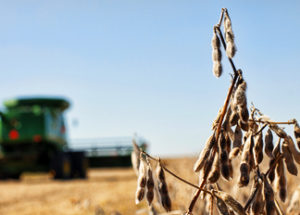
Fertilizer in the Field
By Nora Schultz, Sales Agronomist, CCA
With the satisfaction of seeing all your hard work the past year head off to the elevator, ethanol plant, or into on farm bins, it’s always hard to believe that the beginning of the next crop year is already upon us. As fields begin to empty, fall fertilizer applications will begin. With margins becoming increasingly tight, soil sampling and understanding removal rates are ways to make a small investment now that will make your fertilizer investment all it can be.
SOIL SAMPLES
- Check with your fertilizer provider to understand your soil sampling options. Grid Sampling, zone sampling, or sampling by soil type are possibilities but which one works best for your operation?
- Sit down with your agronomic adviser to understand the results when they come back. Soils testing low to very low are still likely to produce a return even with low commodity prices.
- Where is your pH? Optimum soil pH is important for chemical reactions, nutrient uptake, and soil microbes.
NUTRIENT REMOVAL RATES
- Getting a clear picture of what nutrients are leaving your farm through grain or plant matter is another simple, yet important, part of making a fertilizer plan. As yields have continued to increase, many farmers can be surprised at how much Phosphorus and Potassium can move off of their acres.
- The chart (on front side) is from Iowa State University PM 1688 – A General Guide For Crop Nutrient and Limestone Recommendations in Iowa and is used to calculate your nutrient removal based on crop yield.
- General Role of P – Primarily phosphorus plays an important role in the compounds plants use to store and transfer energy
- General Role of K – Potassium is often associated with the movement of water, nutrients, and sugars within the plant. It also plays an important role in the opening and closing of stomate structures, stalks strength in corn and nodulation in soybeans.
